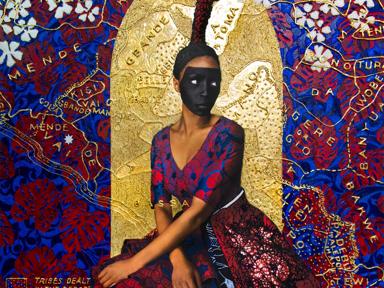5 things to know about Louise Bourgeois: The Woven Child at Hayward Gallery
Louise Bourgeois: The Woven Child is the first major retrospective of this trailblazing artist to focus exclusively on the works that she made with fabrics and textiles during the final chapter of her storied career.
Ahead of its opening at Hayward Gallery on 9 February 2022, here are five things to know about this unique and compelling exhibition.
The exhibition features approximately 90 works made using textiles
The Woven Child surveys the complete range of fabric artworks produced by Louise Bourgeois between between the mid 1990s and her death in 2010. It features approximately 90 works made using domestic textiles, including clothing, linens and tapestry fragments often sourced from her own household and personal history. Also included in the exhibition are several of the artist’s monumental Cell installations, figurative and semi-abstract sculptures, heads made from a variety of textiles, as well as fabric drawings, books, prints and collages.

Bourgeois only started working with fabric in the last 20 years of her life
In the mid 1990s Bourgeois asked her assistant, Jerry Gorovoy, to empty the cupboards on the upper floors of her home and the contents were brought down to her basement studio. She hung the clothing on ceiling pipes and began to sort it by colour, identifying pieces that evoked memories of particular people or places in her life. Garments which held particular significance for Bourgeois were kept intact, and arranged on metal armatures, as with her ‘pole’ pieces, or incorporated into her room-like Cell installations. Other pieces of clothing and textiles were adapted to make figurative sculptures, or were cut up and resewn as fabric ‘drawings’.
The spider is a particularly poignant image within Bourgeois’ fabric work
Bourgeois understood the spider as both protector and predator, and associated it with her mother, a weaver and tapestry restorer. The spider’s ability to weave a web from its own body was a metaphor Bourgeois also used to describe her artistic process.
‘I came from a family of repairers. The spider is a repairer. If you bash into the web of a spider, she doesn’t get mad. She weaves and repairs it.’
Bourgeois’ work reimagines aspects of sexuality and maternal relationships
In her late works with textiles, many of the artist’s lifelong concerns are given additional focus in newly provocative and enlivening ways. Most prominently this includes her exploration of sexuality and our relations with other people. In her fabric sculptures Bourgeois sometimes combined aspects of male and female anatomies and different bodily parts, or fashioned figures that incorporated symbolic elements such as knives or houses to display aspects of psychological attitudes or social roles.
‘There has always been sexual suggestiveness in my work. Sometimes I am totally concerned with female shapes – clusters of breasts like clouds – but often I merge the imagery – phallic breasts, male and female, active and passive.’
The exhibition includes some of Bourgeois’ rarely seen major works
The Woven Child culminates with a group of four major late works, made during the last five years of Bourgeois’ life. Rarely seen together, these pieces present different elements from the artist’s various sculptural approaches – stacked ‘progressions’, steel armatures with spools of thread, bulbous hanging sacs or stuffed mounds – juxtaposed inside large display cases.
In these late works Bourgeois continued to explore the dualities between the physical body and the psyche, the conscious and the unconscious, and the potential for both fragmentation and reparation. These works make up one of the final achievements in the artist’s compelling and fascinating evolution.
The first major retrospective of the artist to focus on her later fabric works, Louise Bourgeois: The Woven Child was at Hayward Gallery 9 February – 15 May 2022.

From internationally acclaimed artists at Hayward Gallery, to pop-up installations, showcases and immersive experiences, enjoy an engaging and inspiring array of art and exhibitions with us.